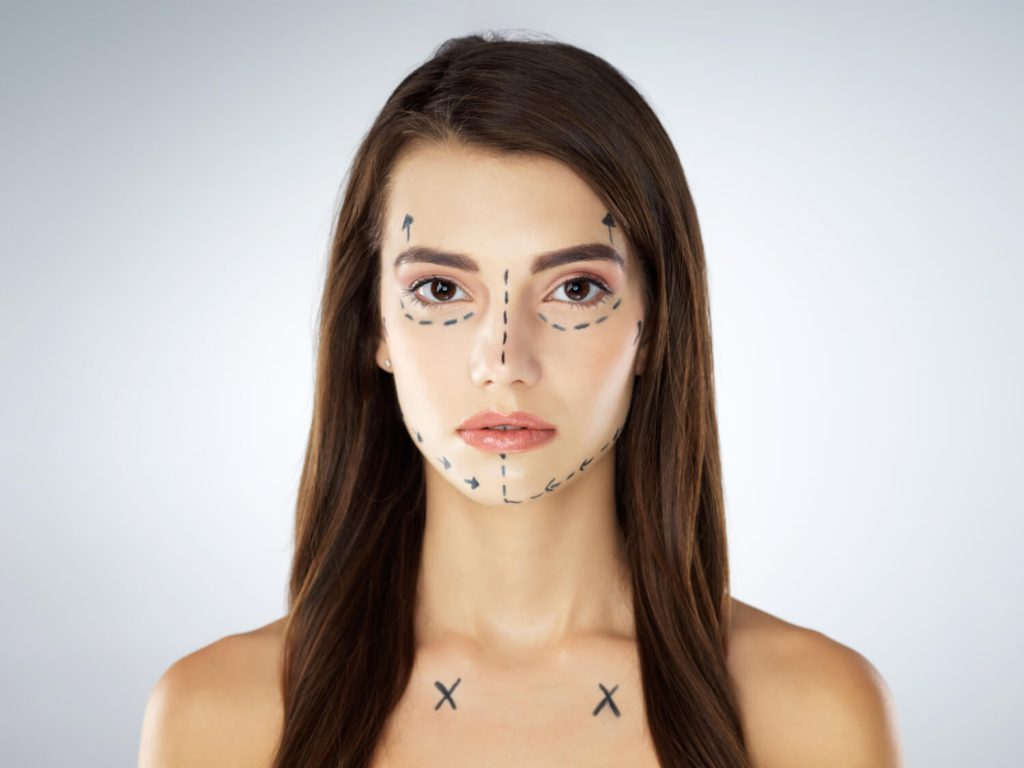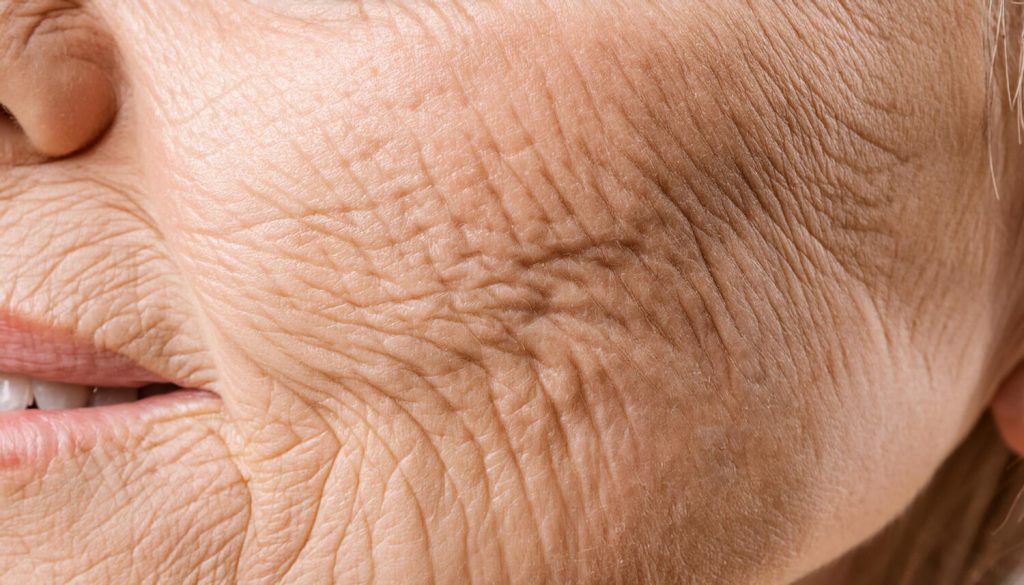Looking in the mirror and noticing that one side of the face doesn’t match the other can feel pretty frustrating. Sometimes this difference shows up in photos, videos, or even during a video call.
A crooked smile, uneven eyes, or a jawline that looks off — these small details tend to stand out. And when they become too noticeable, the urge to do something about it usually grows.
People searching to fix asymmetrical face often wonder where to begin. Is surgery the only option? Can fillers help? Could the face look more balanced again with simpler treatments? These questions come up all the time — and they make total sense.
In this article, you’ll get a clear view of the methods that fix asymmetrical face in both men and women, how surgical and non-surgical procedures work, when it might be time to see a specialist, and what kind of results to expect.
What is facial asymmetry?
Almost every face shows some level of difference between one side and the other. A slightly higher eyebrow, a tilted nose, or a jawline with uneven contours — this kind of asymmetry appears in nearly everyone. When those differences become more noticeable than usual, that’s when facial asymmetry becomes a concern.
Most of the time, facial asymmetry shows up due to genetics. Some people are born with bone or muscle structures that differ from one side to the other. Others start noticing changes over time from factors like aging, chewing habits, sleeping on one side, or even accidents and trauma.
People looking to fix asymmetrical face usually spot visible signs in their appearance, such as:
- eyes with different sizes or shapes;
- uneven cheeks;
- an irregular jawline;
- one side of the mouth that moves less when smiling.
These differences might impact the look of the face, but they can also bring functional issues. In some cases, asymmetry affects bite alignment, chewing, or even breathing. That’s why understanding what causes the imbalance helps guide the best way to treat it.
How to identify facial asymmetry in the mirror?
One of the easiest ways to spot differences involves visually dividing the face in half. By imagining a line running from the forehead down to the chin, any imbalances become easier to notice. People searching to fix asymmetrical face often look for signs like:
- one eyebrow sitting higher than the other;
- eyes with different shapes or sizes;
- the tip of the nose leaning to one side;
- cheeks with uneven volume;
- a jawline more defined on one side;
- lips curving differently when smiling.
Taking a straight-on photo with even lighting can help reveal these differences. Avoid tilting the head, and keep the face relaxed. Another trick includes covering one side of the face at a time with a hand or using apps that mirror the image — this makes comparing each side easier.
It also helps to watch facial expressions. When smiling, speaking, or frowning, does one side move less? Does any muscle feel weaker or slower to respond? These clues often point to structural or muscular imbalances.
Even though no face looks perfectly symmetrical, some differences draw more attention — especially when they start affecting daily confidence. When that happens, many people begin looking for ways to fix asymmetrical face through safe and personalized options.
Fix asymmetrical face with non-surgical procedures
Anyone who feels bothered by facial imbalance doesn’t always want to jump straight into surgery.
In many situations, minimally invasive treatments already help fix an asymmetrical face with noticeable changes, fast sessions, and simple recovery.
These techniques usually focus on volume correction, muscle balance, and facial contouring. The goal centers on creating symmetry without altering deep bone structures.
1. Dermal fillers
Using hyaluronic acid to adjust the cheeks, jawline, chin, or temples ranks among the top methods to fix an asymmetrical face.
Fillers smooth out volume differences and bring more harmony to facial shape. The application uses fine needles and takes only a few minutes.
Read more:
👉 Dermal fillers: what they are and how they work
2. Botox
When asymmetry relates to uneven muscle contractions — like one side of the mouth moving more while smiling — Botox helps balance that out.
The toxin reduces activity in overactive muscles, creating more symmetry between both sides. Results usually show up within a few days and last around 3 to 6 months.
3. Thread lifts
For patients with asymmetry caused by sagging skin on one side, thread lifts reposition the skin gently. This treatment may lift the brow, define the jawline, or raise the cheek — all without incisions or scars.
4. Deep stimulation technologies
Devices using radiofrequency, focused ultrasound, or fractional lasers stimulate collagen in areas showing imbalance. When the issue ties to skin firmness or contour loss, these technologies support efforts to fix asymmetrical face by improving texture and definition.
Each option requires a personalized assessment. In many cases, combining treatments brings the most natural-looking outcome.
The goal doesn’t involve creating a perfectly symmetrical face — it focuses on building visual balance that fits each person’s unique features.
Fix asymmetrical face with plastic surgery
Some facial differences go beyond what non-invasive treatments can improve. When asymmetry involves bone structure, facial organ size, or more severe sagging, many people turn to plastic surgery to fix asymmetrical face with greater precision and longer-lasting results.
These surgeries may be done individually or combined, depending on the cause and the area affected.
1. Rhinoplasty
The nose plays a major role in overall facial balance. A deviated septum or a tip that leans to one side often contributes to a visual imbalance.
Rhinoplasty corrects structural issues, improves breathing, and helps fix asymmetrical face by refining proportions.
Read more:
👉 How much does a nose job cost?
2. Facelift
Patients dealing with sagging on one side of the face due to aging or collagen loss may benefit from a facelift.
The procedure lifts the muscles, removes excess skin, and restores firmness. In asymmetrical cases, surgeons can tailor the lift to each side to achieve better balance.
3. Chin or jaw implants
When asymmetry involves chin projection or jawline size, silicone implants help shape and balance the facial contour.
The same goes for the jaw, which can gain more definition through implants or bone reshaping. These techniques support structural improvements to fix asymmetrical face.
4. Eyelid surgery
Differences in the eyelids also impact the symmetry of the eyes. Blepharoplasty removes excess skin and fat from the upper or lower eyelids, making the eyes appear more aligned and refreshed.
Plastic surgery offers a more comprehensive approach for correcting noticeable facial asymmetries. While it does involve recovery time, the results typically last longer.
For those looking to fix an asymmetrical face safely and naturally, surgical procedures remain one of the most recommended options — always with guidance from qualified specialists.
Read more:
👉 Face Lift vs. Non-Surgical Alternatives: Which is right for you?
Do exercises and lifestyle changes make a difference?
Many people try to fix facial asymmetry on their own before seeking medical help. Videos promoting facial exercises, massages, and habit changes show up all over the internet. But can these practices really fix an asymmetrical face?
Repetitive movements that activate facial muscles — like face yoga or expression training — might lead to small improvements, especially when the asymmetry comes from overusing one side of the face while chewing, sleeping, or resting the head. Still, these effects usually remain subtle and take time to appear.
Some lifestyle adjustments also influence facial balance:
- switching sides when sleeping;
- avoiding chewing on just one side;
- correcting head and neck posture;
- stopping habits like resting the face on the hands or teeth grinding.
These actions help prevent further imbalance, but they rarely reverse visible asymmetry. People aiming for more noticeable results to fix asymmetrical face often combine these habits with medical or cosmetic treatments.
Another important point involves expectations. Exercises and healthy habits support skin quality, muscle tone, and subtle facial balance.
However, when structural issues like bone misalignment or significant sagging are present, these methods typically don’t bring meaningful changes.
Book a consultation at Smart Plastic Surgery
When facial asymmetry starts to feel truly bothersome, seeking expert guidance usually becomes the most recommended step. In Miami, FL, the team at Smart Plastic Surgery welcomes men and women who want to fix asymmetrical face with safety, discretion, and natural-looking results.
During the initial consultation, the surgeon carefully evaluates every detail of the face — bone structure, muscle balance, lifestyle habits, medical history, and personal goals. From there, a customized treatment plan is created, which may include surgical procedures, non-surgical options, or a combination of both.
Booking an appointment is simple. Just reach out to the clinic by phone, website, or social media. The team follows up with available time slots and offers guidance on the next steps — including how to prepare facial photos, required exams, or answers to common questions.
👉 I want to schedule an evaluation with Smart Plastic Surgery



